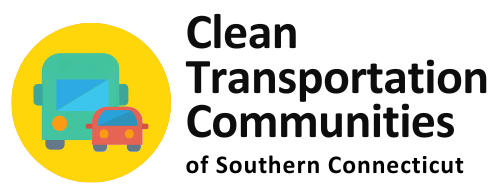
- This event has passed.
National Conference on Sustainable Development 2020: Electric School Bus Toolkit
May 27, 2020 @ 10:00 AM - 1:00 PM
Live Green and CT Southwestern Area Clean Cities Coalition in partnership with Greater New Haven Clean Cities Coalition and Capitol Clean Cities Coalition present the National Conference on Sustainable Development 2020: Electric School Bus Toolkit, on Wednesday, May 27, from 10am – 1pm.
This virtual conference illustrates how the Global Sustainable Development Goals integrate into local communities through metric driven programs and initiatives and will provide the opportunity to share resources and learn from others from around the block, throughout the region and across the country.
NCSD 2020: Electric School Bus Toolkit Objective: To hasten the adoption of electric school buses across the country through education, outreach, metric-driven programs, collaboration, and resource sharing.
Highlights Include:
- Electric School Bus Toolkit 6 Week Program – Outcomes
- Recognition of local change agents and Community Champions
- Demonstration of how the right legislation can have a profound impact on electric school bus procurement
- The important role that utilities play in electric school bus adoption
- Regional approaches to EV and electric school bus implementation
- Success stores from around the nation
- Immediate actions communities can take to hasten electric school bus procurement
The NCSD 2020: Electric School Bus Toolkit features panelists and presenters from boards of education, electric school bus manufacturers, school districts, utilities and legislators.
The program will include a brief presentation on the Electric School Bus Toolkit 6 week program, which will be followed by three panels and closing remarks.
Panel 1: Local efforts and participants’ outcomes from the Electric School Bus Toolkit 6 week program.
Panel 2: Legislation that supports electric school buses and will feature legislators, including Delegate Kaye Kory from Virginia.
Panel 3: Showcases electric school bus success stories and will shine the light on New York, Vermont, and California.
Intended Audience:
Utilities, boards of education, school district superintendents, school district directors of finance, school district transportation/fleet directors, school bus fleet operators, legislators, Mayors, First Selectmen/women, Councils of Governments, charging infrastructure and V2G providers, air quality bureaus, environmental groups, health agencies, PTAs, parents, community leaders, Clean Cities Coalitions, and anyone interested in learning how their community can take a step towards electric school buses.
Background
Each day, nearly 600,000 school buses transport 24 million students to schools in the U.S. powered by diesel fuel. The time spent on buses by individual students varies between 20 minutes and several hours per day. For one child, a half-hour ride to school, and a half-hour ride home each day amounts to 180 hours per school year—90 full 24- hour-days over 12 years of school. Annually, U.S. children spend 3 billion hours on school buses.
Why electric school buses?
- Diesel exhaust is classified as a probable human carcinogen by many governmental authorities, including the International Agency for Research on Cancer (WHO), the U.S. National Toxicology Program, the U.S. Environmental Protection Agency, and as a known carcinogen by the State of California.
- The California South Coast Air Quality Management District recently estimated that nearly 71% of the cancer risk from air pollutants in the area is associated with diesel emissions.
- Diesel exhaust includes benzene, 1,3-butadiene, and soot, all classified as known human carcinogens.
- Nearly 33 studies have explored the association between diesel exhaust exposure and bladder cancer.
- Diesel exhaust contains both carbon particulates and 40 chemicals that are classified as “hazardous air pollutants” under the Clean Air Act.
- Exposure to particulates has been associated with: increased mortality among those with cardiopulmonary diseases; exacerbation of symptoms for asthma, bronchitis, and pneumonia; decreased lung function; and retarded lung development. It has also been correlated with increased hospital admissions and emergency room visits for respiratory illnesses.
- Children may be especially susceptible to adverse respiratory effects following exposure to fine-diameter particulate matter (PM2.5) emitted from diesel engines.
- Smaller particles are able to penetrate children’s narrower airways reaching deeply within the lung, where they are more likely to be retained.
- Higher rates of respiration among children may lead to their higher exposure, when measured per unit of their body weight.
- There is no known safe exposure to diesel exhaust for children, especially those with asthma or other chronic respiratory disease. Nationally, 4.8 million children have asthma.
- Asthma costs an average of $500 per child per year for medications, physician care, and hospital treatment. This estimate does not account for other costs that often include school absenteeism, lost parental work while caring for ill children, psychological effects, and abnormal social development.
- Children are exposed to airborne particulate concentrations inside buses that are sometimes 5-15 times higher than background levels.
Informational event flyer (PDF)

